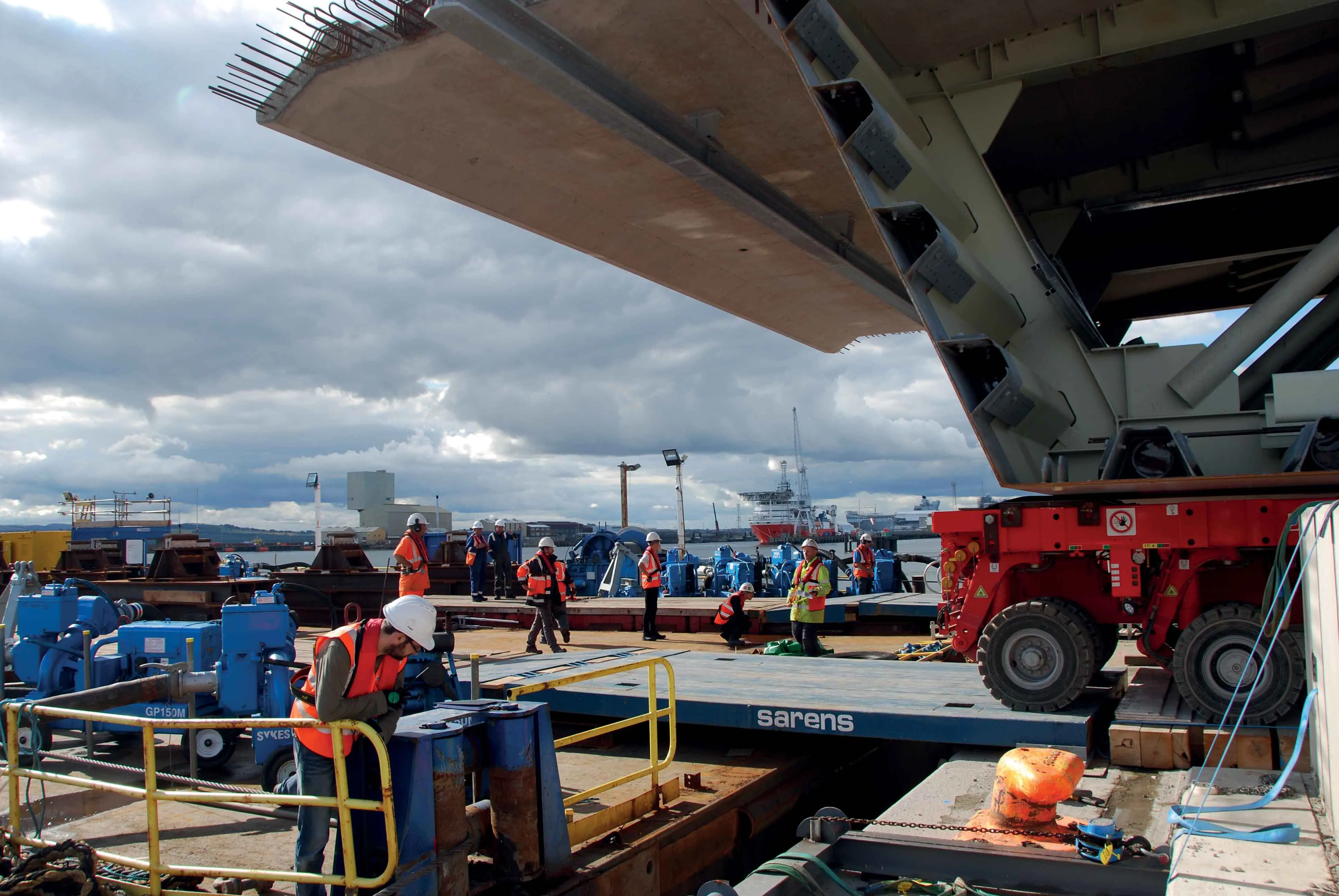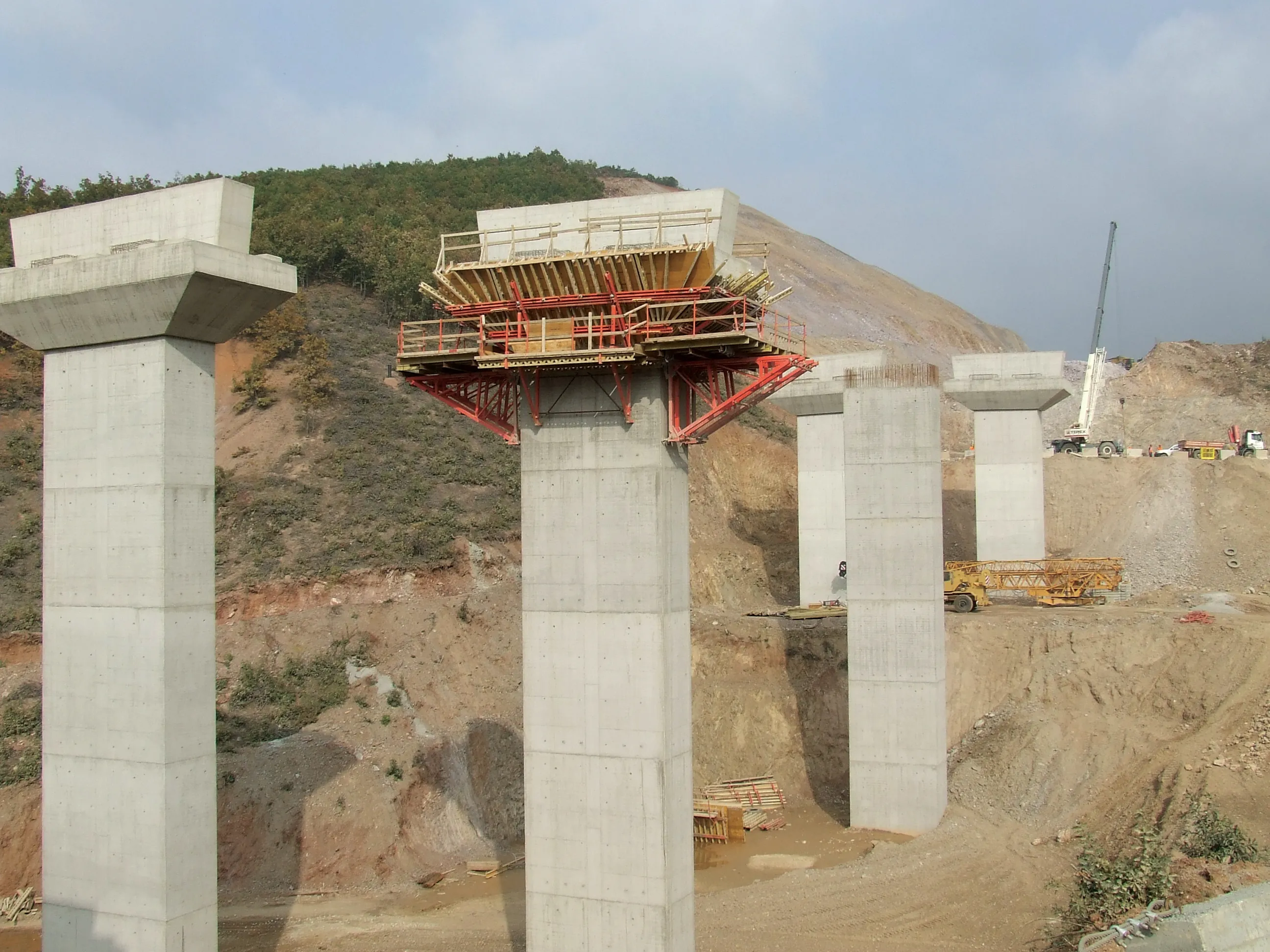UK hire specialist, Sykes Pumps, is playing a vital role in delivering Scotland’s biggest transport infrastructure project in a generation - The Forth Replacement Crossing (FRC).
Once completed later this year, the new road bridge will be the longest three-tower cable-stayed bridge in the world. Forth Crossing Bridge Constructors (FCBC) consortium is using 42,000 tonnes of steel.
Getting all that steel out into the Firth of Forth is a delicate operation. The project involves transferring 7,000tonne se
June 17, 2016
Read time: 2 mins

UK hire specialist, 8165 Sykes Pumps, is playing a vital role in delivering Scotland’s biggest transport infrastructure project in a generation - The Forth Replacement Crossing (FRC).
Once completed later this year, the new road bridge will be the longest three-tower cable-stayed bridge in the world. Forth Crossing Bridge Constructors (FCBC) consortium is using 42,000 tonnes of steel.
Getting all that steel out into the Firth of Forth is a delicate operation. The project involves transferring 7,000tonne sections of prefabricated steel and concrete deck onto float-out barges using SPMT (self-propelled modular transport) vehicles.
For that reason, Sykes Pumps is playing a vital role in managing the ballast of the float-out operation being delivered by heavy lifting and engineered transport specialist, Sarens.
Sykes Pumps has provided Sarens with 50 of its general purpose GP 150M diesel pump.
The GP 150M, with the Sykes Univac vacuum system, is used wherever there's a need for positive self-priming. The pump primes and re-primes automatically from dry and is powered by a 20kW Lister engine with many optional configurations.
Sykes Pumps worked with Sarens to calculate the ballast requirements for the load-on and load-off manoeuvres. It also invested in additional fittings and butterfly valves for the pumps to provide dual suction and discharge, reducing the number of pumps and personnel required on site and optimising efficiency for the ballasting operation.
“We are using two load out vessels for the project, each with 25 pumps,” says Alister Smith, project manager at Sarens. “We have worked with Sykes Pumps several times before and knew that the company could ensure that water pumped into and out of the vessels’ tank compartments is calculated accurately.”
Sykes Pumps’ float-outs expert, Richard Box, said he could advise the client on dual suction and discharge pumping, enhancing the efficiency of the ballasting operation and ensuring the float-outs are completed safely in line with the construction programme.”
Once completed later this year, the new road bridge will be the longest three-tower cable-stayed bridge in the world. Forth Crossing Bridge Constructors (FCBC) consortium is using 42,000 tonnes of steel.
Getting all that steel out into the Firth of Forth is a delicate operation. The project involves transferring 7,000tonne sections of prefabricated steel and concrete deck onto float-out barges using SPMT (self-propelled modular transport) vehicles.
For that reason, Sykes Pumps is playing a vital role in managing the ballast of the float-out operation being delivered by heavy lifting and engineered transport specialist, Sarens.
Sykes Pumps has provided Sarens with 50 of its general purpose GP 150M diesel pump.
The GP 150M, with the Sykes Univac vacuum system, is used wherever there's a need for positive self-priming. The pump primes and re-primes automatically from dry and is powered by a 20kW Lister engine with many optional configurations.
Sykes Pumps worked with Sarens to calculate the ballast requirements for the load-on and load-off manoeuvres. It also invested in additional fittings and butterfly valves for the pumps to provide dual suction and discharge, reducing the number of pumps and personnel required on site and optimising efficiency for the ballasting operation.
“We are using two load out vessels for the project, each with 25 pumps,” says Alister Smith, project manager at Sarens. “We have worked with Sykes Pumps several times before and knew that the company could ensure that water pumped into and out of the vessels’ tank compartments is calculated accurately.”
Sykes Pumps’ float-outs expert, Richard Box, said he could advise the client on dual suction and discharge pumping, enhancing the efficiency of the ballasting operation and ensuring the float-outs are completed safely in line with the construction programme.”








